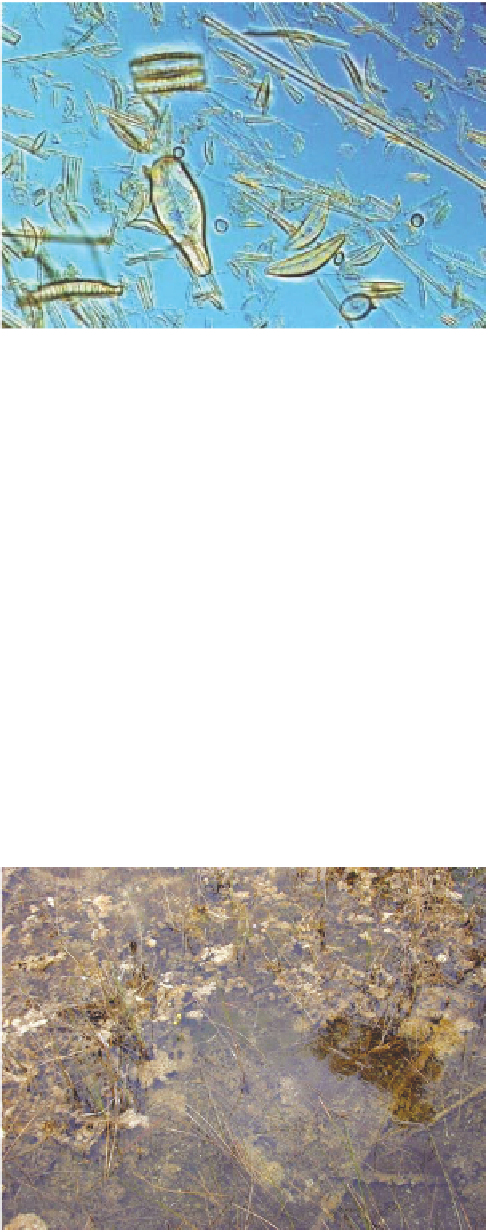Environmental Engineering Reference
In-Depth Information
FIGURE 6.3
Periphyton assemblage—low magniication shot of periphyton in Lake Hovsgol. (From
University of Michigan, micrograph by Mark Edlund. With permission.)
The periphyton are also distinguished based on the substrates on which they grow (Figure 6.4).
They include (Allan and Castillo 2007):
•
Species that grow on stones (epilithon)
•
Species that grow on soft sediments (epipelon)
•
Species that grow on other plants (epiphyton)
The epilithon would be commonly found in low-order, fairly high-energy streams with fairly
armored substrates. The epipelon would be expected in more low-energy environments, since
the sediment on which they reside could be swept away during high-low events. The epiphyton
are found in the presence of other aquatic plants, such as the macrophytes (macro meaning “big”
plants). The epiphytes are not parasitic; they merely use the host plants, such as the plant leaves, as a
substrate on which to grow. However, in excess, they can harm their host plant by reducing the light
penetration to their host's leaves.
The growth of periphyton is limited by the availability of light, nutrients, substrates, grazing, and
also current velocities. Because of the importance of periphyton, a number of techniques and models
have been developed to predict periphyton variations. Velinsky et al. (2002) and Thuman et al. (2006)
FIGURE 6.4
Periphyton. (From U.S. Geological Survey, South Florida Information Access [SOFIA]. With
permission.)

Search WWH ::

Custom Search